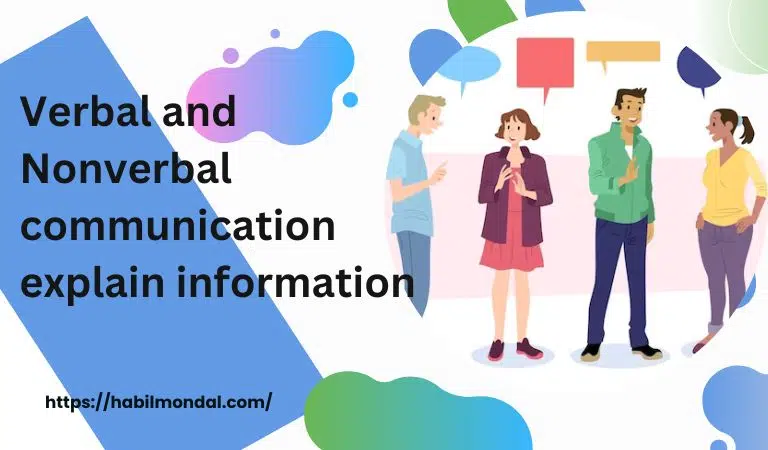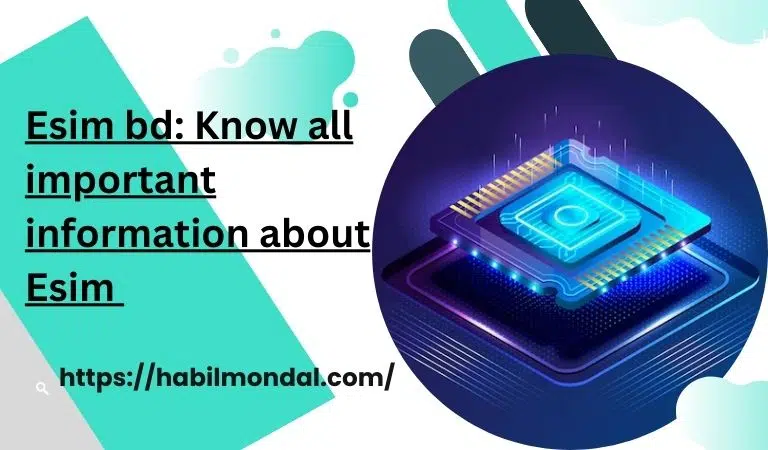Verbal and nonverbal communication are two types of communication based on expression/method/media. . When information is exchanged through words, this is called oral communication. Different kinds of organizations employ various kinds of communication technologies. Language is a method for expressing information through words and grammar.
This form of communication uses oral and written methods. Verbal communication is informally known as oral and written expression. When information is exchanged without words, this is called nonverbal communication. In comparison to verbal communication, nonverbal communication media is automatic. Most nonverbal communication is unstructured, and no book-reading language or vocabulary pertains to this communication.
The term verbal communication refers to both verbal and nonverbal communication.
Communicating verbally means exchanging information with others using words. Oral and textual communication techniques employed independently or combined to achieve verbal communication. Verbal communication includes face-to-face conversations with family members, interviews, memos, telexes, faxes, telegrams, and others.
Nonverbal communication occurs when information exchanged without using words. Unlike verbal communication, non-verbal communication is nonword communication. Such communication based on symbols or other means of conveying a message and is neither written nor vocal. Verbal and nonverbal communication impact our daily lives.
What is verbal communication?
when exchanged with the help of written or oral words this is called verbal communication . Verbal exchange is the most typical kind of communication. In the world, most of Their time communicating verbally for Their easiness. Verbal communication means exchanging information through words.
Face-to-face communication, conversations, meetings, interviews, etc., are the kinds of communication we use orally. In contrast, written communication done through letters, memoranda, reports, the internet, telex, fax, telegraph, and other means. We regularly interact with family members, friends, students, coworkers, salespeople, customers, and professionals.
We utilize written and vocal means, or both, to transmit our message, news, thoughts, ideas, and other information; this known as verbal communication. For instance, we use formal letters when placing an order for items. If the supplier accepts the order, he sends confirmation through a letter, fax, phone, or the internet.
Both written and spoken approaches are employed, resulting in informal communication. Communication that is both verbal and nonverbal is generally advantageous. Above all, if we are lonely, we may call our closest friends, sit and talk on the internet, or send messages by e-mail or cell phone. It’s all just verbal conversation.
# Types of verbal communication
Verbal communication may be classified into two parts.
- Oral communication
- Written communication
The following sections discuss oral and written communication.
Read more:
what is data security and privacy: Sensitive Information
Employment communication: CV and Appointment letter
Oral communication:
Oral communication is a form of communication where the sender and recipient exchange information orally. It expressed through speaking and listening. It is made up of words that have been organized in meaningful patterns. Discussions, telephone calls, meetings, and conferences are examples of cross-table communication.
In expressing a variety of social and work-related news and trends, oral communication is more precise and faster than most formal communication. Oral communication encompasses, for example, face-to-face conversations, telephone conversations, radio broadcasts, interviews, group discussions, meetings, public-addressed conferences and seminars, speeches, and so on.
Written communication:
The transmission of a message that has been encoded and expressed in writing is known as written communication. It is the written expression of one’s feelings, thoughts, opinions, and other thoughts.
Written communication refers to a message that conveyed using a written medium. It is a written form of communication employed when the audience is far away, and a record required.
Written communication commonly employed in every company. The supervisor gives constant advice, orders, and instructions to his subordinates. Subordinates can also submit written ideas and grievances to their superiors. For instance, letters, memoranda, reports, the internet, telex, telegraph, fax, and so on. Verbal and Nonverbal communication have different types.
Guidelines for verbal communication
The following are the guidelines for verbal communication.
Be specific about what you want to say: A person must know what he wants to convey before speaking. As a result, any communication or information should be given with mental preparation. As a result of the meaningless talk, aimless production will result. It is necessary to shun opinions with which one is unfamiliar.
Consider your listener or audience: When sending a message or sharing information with others, the sender must consider the receiver’s position. The communicator must consider the receiver’s knowledge, attitude, and thought process.
Move from simple to complex: In communication, communicators should start with fundamental notions or ideas and work their way up to more in-depth conversation. This aids the listener in fully comprehending the problem at hand.
For example, rather than teaching financial statements, a teacher should begin by teaching debit and credit rules.
Select words carefully: Confusing terms should not be utilized in verbal communication. Considering the listener’s or audience’s background, experience, and culture, simple and communicative terms should be used.
More guidelines of verbal communication
Clear expression: Any person says, states or writes must be expressed clearly. Failure to properly enunciate a word or write a spelling may result in communication failure.
Use the active voice: Because it is clear and direct, the active agent is easier to understand. You can talk more deliberately if you use the active voice. Saying “Mr. A called me” rather than “I was called by Mr. A” is a better example.
Be courteous and natural: The communicator must preserve decency to leave an impact on the audience or listener. Negative attitudes must be avoided at all costs. Furthermore, rather than adopting a fake attitude toward the listener or audience, the communicator should be more genuine—the most efficient communication results from a respectful and natural approach.
The rules for verbal and nonverbal communication are different.
Business Application of verbal communication
We may need to interact verbally through one-on-one conversations, task force, committee work, formal meetings, and via phone to carry out our business tasks. In this part, we’ll discuss some strategies for dealing with each scenario.
One-to-one conversation: Every interaction between two individuals, whether between peers or a supervisor and a subordinate, may be categorized as a conversation. Your career may be profoundly impacted by even the most insignificant interaction you have in the employee lunch area or beside the copy machine. Permanently preserving corporate or individual confidence would be ideal. Additionally, you must be conscious of the person you are speaking to.
Task force/committee work: Working in small groups, such as task forces or committees, presents some unique communication issues. Working groups usually concentrate on specific subjects or projects, giving each member a shared aim.
Formal meetings:
You may frequently participate in official discussions as a group member. However, you may be called to chair a formal meeting on occasion. In several ways, the chairperson’s obligations differ from a participant’s.
Premeeting activities: You can be in charge of procuring a meeting venue, alerting attendees, seating arrangements, regulating the physical environment, and watching over the meeting arrangements in general. If you’re in charge of all the premeeting arrangements, delegate as many of the routine ones as possible, and double-check the room to ensure everything is in order.
Post meeting activities: Follow-up summaries are one of the most crucial post-meeting actions. A Secretary may record minutes occasionally, but minutes should only include action taken. An overview can be handy. Outlines are helpful for a variety of reasons:
- Everyone receives a written certification of the functions in the same format.
- Task assignments must be confirmed in writing.
- Summaries offer a clear summary of the choices that have been made and the votes that have been cast.
- Absenteeism recorded in summaries for both participants.
Read more:
Electronic Communication :Telephone, Internet, Fax, E-mail
Communication media: Personal and Business letters.
The meeting recap should include the following details:
- The meeting’s date, time, place, and chairperson.
- The individuals whose names make up that percentage ( if meeting size permits)
- Decisions reached after carefully considering every item on the agenda.
- If action agreed upon, write down and highlight the names of the people involved and their roles.
- The meeting’s time has come to an end. (Knowing if the talk lasted fifteen minutes or six hours may be necessary.)
- The next scheduled meeting’s date, time, and location.
- An expression of gratitude.
Telephone conversations: A telephone call is one of the most common forms of spoken business communication. Clarity and brevity preferred while talking on the phone. When calling someone, you never know how busy they are, so be kind, quick, and straightforward.
Cover the essential issues without devoting too much time to them. If you’re asking someone to do certain activities, make sure they know what they supposed to do and when they have to do it. Thank the individual for their time, information, or other help.
Business reports: Another type of verbal communication is presenting business reports.
Above all, the requirement to summarize after a meeting is a trait common to spoken business communication. The condition is the same whether the discussion is one-on-one, task force or committee work, or a formal meeting.
Advantages of verbal communication
In the corporate sector, both verbal and nonverbal communication are widely prevalent ways of communication. It has several unique qualities that have made it famous among those working in the field of organizational management. The following list of benefits demonstrates its significance:
- Authoritative document :
In the event of a disagreement over major communication issues or the necessity to produce evidence in court, written communication deemed authoritative since it accepted as a legal document.
- Time-saving:
It is the most excellent approach to communicate a message vocally when quick action required. It takes a long time for written communication to reach the intended recipient. Oral communication, such as a phone call or a talk with subordinates, saves time, which is extremely valuable in the corporate world.
3 . Reduction of cost.
Unlike written communication, verbal communication does not require the acquisition and upkeep of pens, paper, typewriters, computers, or other items. As a result, it benefits money.
- Easily understanding:
Written communication allows the recipient to read the messages several times until he fully comprehends them. A method like this allows for a clear and thorough interpretation of the message.
- Permanent record :
Written communication is the flow of permanent records that may be referred to in the future. As a result, based on prior Orders and judgments, new and fresh decisions might be made.
Other advantages
- Motivation :
Superiors and subordinates can sit face to face and share opinions directly in verbal communication; this arrangement stimulates and inspires people to work with great attention.
- Effective for illiterate people :
Illiterate people cannot read, yet they can hear and comprehend any information or communication. As a result, it is the most suited mode of communication for illiterates.
- Reduction of risk :
Because written communication functions as a document, it can aid in thoroughly examining documented data across time. This will assist in lowering the anticipated risk or loss.
- Alternative method :
Business operations focus on written documents or information, and supervisors are too busy to listen to their employees’ issues and complaints daily. As a result, such communication has shown to be the most excellent option for meeting corporate objectives.
- Quick feedback :
Another significant benefit is that it delivers immediate feedback regarding oral messes or facts. As a result, the sender or speaker might make further selections.
- Maintaining secrecy
- Reliability
- Co – ordination
- Avoidance of slow coach
- Flexibility
- Special application
- Less possibility of distortion
- Delegation of authority
- Effective control
- Personal emage
- Wide access
Read more:
OSS full form || OSS Full Form in Computer
ALU full Form in the English Language
What is Nonverbal communication?
The communication process is when information transmitted without using words. When opposed to verbal communication, nonverbal communication is a more intuitive kind of communication. Whether or not we are aware of it, we all engage in this kind of connection every day.
Many thoughts, sentiments, or feelings communicated in this way. A close examination or a little idea can be enough to reduce the amount of time we have to execute such communication.
The communication process is primarily unstructured, and no book describes the language or terminology used in this communication. We reflect on nonverbal communication when we smile, frown, or display sad expressions. As a result, our emotions portrayed through our faces or actions without our knowledge or agreement.
When we communicate nonverbally, we do it without using words. Both verbal and nonverbal clues considerably aid in communication.
Examples include gestures, body language, symbols, visual communication, and other nonverbal communication.
Types of nonverbal communication
Nonverbal communication refers to communication that occurs without the use of written or spoken language. Nonverbal communication defined as communication that occurs without the use of words. There are various verbal and nonverbal communication symbols or media. Several characters used in nonverbal communication, as listed below:
- Silence:
It is a highly effective communication tool. Silent communication occurs when no words said and no gestures performed, but the message conveyed. For instance, if a person assigned a challenging task or work, he may keep silent, known as silence. Silence like this might imply indifference or a lack of comprehension.
- Body language: Body language is the art of communicating using movements and postures. There are two sorts of it.:
(i) Unconscious movement :
We stroll around the room when we bored. We bite our nails when we feel scared. The majority of these motions are unintentional.
(ii) Conscious movement:
We communicate our sentiments by conscious movement when we salute our national flag, forward our arms, sit, work, or stand.
- Gestures :
A gesture is a deliberate physical movement used to convey a message to Conway. Gestures may indicate a wide range of emotions and intentions. When we introduced to two older persons in higher-ranking jobs, for example, we show some respect. Things are under control, as evidenced by thumbs-up motions.
Some other types of nonverbal communication
- Facial expression:
Faces play a crucial role in nonverbal communication. Because they are capable of expressing a broad spectrum of emotions, from joy to grief, frustration to pleasure. When we pleased, we grin, and when we are unhappy, we have a gloomy expression.
- use of voice or body language:
A crucial tool for communication is the voice. Anger to extremely expressive noises heard in the vote. The tone of a person who speaks slowly is faint. As a result, various voices or styles convey different meanings, and voice quality sends us distinct messages.
- Touch :
We may convey and avoid a variety of emotions via touching. We exchange pleasantries when we embrace each other during Eid. Express your fury by slapping or kicking someone. Touch communication should take into account both cultural trends and personal preferences. For example, embraces may be frequent greetings in some cultures but may not be in others. On the other hand, the handshake favored by one person but not by others.
- Space and distance :
Space has become a measure of a person’s relative importance in many organizations. As you climb the organizational ladder, your office will likely grow and be well-furnished. As a result, space sends a message about a person’s prominence in an organization. The degree of closeness and individual acceptance is also shown by distance. The distance you maintain between yourself and other people conveys a message. Sitting in a meeting near other people indicates that you are less formal and like closeness. Making distance, on the other hand, suggests that you desire a barrier.
Importance of nonverbal communication
A nonword or communication without a word referred to as non-verbal communication. Its significance is unfathomable since we immersed in and influenced by it in our everyday lives. Verbal and nonverbal communication have considerable importance. The value of nonverbal communication is justified in the following short but clear reasons. :
- Ninety-nine percent (93%) :
In our daily lives, nonverbal communication is critical for conveying sentiments and behaviors. Almost 93% of our emotions expressed through this type of communication.
- Provide instant effect :
To receive good feedback, verbal communication takes significantly longer than nonverbal communication. There is less time to notice the state of mind when tears fall from the eyes. We can tell that the country recognizes and appreciates any contribution when our national flag flown at half-mast.
- Reliable :
Nonverbal indicators like body language, facial expressions, and gestures, on the other hand, cannot be modified instantaneously since they represent a specific and current state of mind. It’s more expressive than a written remark like “I’m glad.”
Two other importance of nonverbal communication
- Quick transmission:
Nonverbal signals can send messages to the receiver fast. We may always forward our feelings without even realizing it. When we embrace, shake hands, or display our thumbs, we convey quick communication, similar to how electricity flows.
- More powerful :
Language cannot compare to the power of colors or simple noises. Our attitude toward protesting specific movements may be seen when we fly a black flag or wear a black band. We all rise and remain silent as the national anthem performed. During that silence, we try to remember our national “Heroes.”
Therefore, nonverbal communication provides the most influential media. The significance of nonverbal communication is thus amplified by the considerations above.
Difference betweenverbal and nonverbalcommunication
Verbal and nonverbal communication differ in the ways listed below:
- Information sharing through speaking constitutes verbal communication. The exchange of information without using words referred to as nonverbal communication.
2. In contrast to nonverbal communication, based on nonwords, verbal communication ,built on words.
- Verbal communication is two types.
(i) Oral communication
(ii) Written communication.
Nonverbal communication, on the other hand, can take six various forms.
(i) Visual communication
(ii) Audio communication
(iii)Audio-visual communication
(iv)Gesture
(v) Passive
(vi) communication through action.
- Face-to-face contact, discussion, meetings, interviews, letters, memoranda, reports, the internet, telex, and telegram are all examples of verbal communication.
Unlike verbal communication, nonverbal communication consists of gestures, body language, facial expressions, and visual communication.
Read more:
OTT full form : Know all about OTT
Conclusion
This article shows Verbal and nonverbal communication and offers these communication meanings, types, advantages, disadvantages, etc. We hope the article will be helpful. If you like the story, please tell your friends. I look forward to your valuable comments. Read the message and learn about verbal and nonverbal communication. See you in the following entry. Be healthy.







